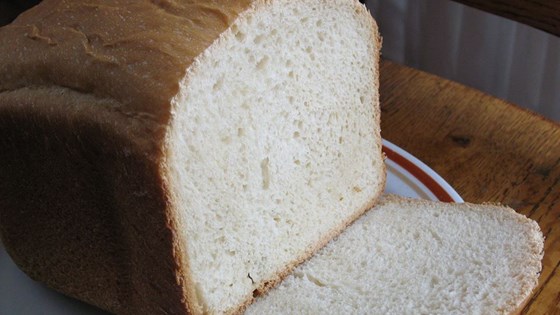Hey there, everyone!
First time poster. Super amateur baker here, educating myself about the science of baking. I have a few questions about crumb structure that have been plaguing me for quite a while.
I've always been a gigantic lover of breads with a crumb like this:

as opposed to those more like:

My questions are:
- How would I even go about describing the crumb structure of the bread on top? Is it "wispy?" (Doesn't sound right.) Is it close-textured?
- Does the particular type of bread on top have a name? (I thought it might be a baguette, but that image is a screenshot from a video, and the slices on that image are actually about hand-sized.)
- If I were to look for recipes to make bread like the one on the image on top, what should I look for? A particular ingredient or technique being utilized?
I appreciate any and all help, and I'm happy to be part of this community!
But I think flour and hydration plays the biggest part to the differing crumb.
Top one looks like a higher hydration durum flour bread and the bottom photo looks like a lower hydration AP flour bread.
Crumb is usually described as "open". The more holes the more open the crumb. A closed crumb is more like the bread in the bottom picture.
As to the name of the bread in the top picture it is hard to tell. To me it looks like an Italian loaf but it could be a rustic loaf, boule, batard ... and many more names. Bread naming is somewhat arbitrary.
Many here would recommend that you search on "rustic bread" or "sourdough bread". How the end product looks is all about how you do your final shaping and how it is baked.
Welcome aboard and I hope you enjoy the journey. Warning! - bread making and baking can be addictive.
Jim
start with a pain rustic or a country bread and go from there...hamelman or reinhart have great recipes for both...the pain rustique is a great place to start as its four ingredients, gives you space to play with and delivers a quality bread thats excellent for eating...alot of...weekendbakery.com also do great videos on everyday breads as well as alot of helpful info
What you are seeing in the top loaf is probably an enriched dough, meaning that it has some form of fat like butter,oil or lard.
It is kneaded to windowpane. That is probably the technique that will have the greatest impact on achieving that texture. Here s a great link describing it and how to achieve it.
http://www.thefreshloaf.com/node/23061/extremely-sourdough-soft-sandwich-bread-most-shreddble-soft-velvety-ever
The third thing I am seeing is a yellow color. This is either from a flour (like kamut,durum or even semolina) or from eggs.
The top picture is a batard shaped loaf and the 2nd pic is a sandwich loaf, of course.
Here are more links on Hokkaido Milk Bread. That will probably be what you want to pursue.
http://www.thefreshloaf.com/node/51372/hokkaido-milk-bread-unreal
http://www.thefreshloaf.com/node/23662/sourdough-hokkaido-milk-loaf-classic-shreddable-soft-bread
Start using the search box for key words like "shreddable" "soft" "wonderbread" (really)
Wow, thank you so much for all of your responses. I love this community!
A few follow-ups:
To reiterate, now with the descriptors I've developed thanks to these lovely replies, what I'm looking for is: a close, shreddable, light crumb with only a few medium-sized holes sprinkled about. It might be worth mentioning that when sliced and toasted, the crumb develops a sheen of sorts and a knife glides over it more smoothly than it would on a more "cake-like," uniformly-holey crumb.
Any additional insights would be greatly appreciated! :D
http://www.thefreshloaf.com/node/23061/extremely-sourdough-soft-sandwich-bread-most-shreddble-soft-velvety-ever
This link is the one you should go for in my opinion I think it would tick most of your boxes just bake slightly longer or finish out of the tin for a crisp crust. The method of doing separate rolls and laying next to each other in the tin means you cut slices across the grain (as mentioned in the comments on the post) that seems to add to the crumb being 'shreddable'. Delicious too.